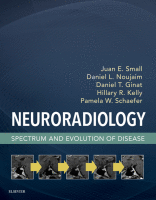Physical Address
304 North Cardinal St.
Dorchester Center, MA 02124

Introduction Central nervous system (CNS) toxoplasmosis is an opportunistic infection caused by the intracellular protozoan parasite Toxoplasma gondii . This parasite may be acquired in utero or through the ingestion of infected meat or cat feces, as cats are its…

Introduction Herpes simplex encephalitis (HSE) is the most common cause of fatal sporadic encephalitis worldwide. In adults and older children, most cases of HSE are caused by the herpes simplex virus 1 (HSV-1) virus. Patients initially present with nonspecific neurologic…

Introduction Central pontine myelinolysis (CPM) was originally described by . He first detailed the entity in a group of malnourished and alcoholic patients. Further studies and advancement in medicine have shown that CPM most commonly results from the rapid correction…

Introduction Wernicke encephalopathy (WE) was first described in 1881 by Carl Wernicke as a “superior acute hemorrhagic polioencephalitis.” WE is now recognized as a complication of thiamine (vitamin B1) deficiency and results in the following clinical triad: mental confusion, gait…

Introduction Cerebral amyloid angiopathy (CAA) is a microangiopathy defined by progressive deposition of beta amyloid (Aβ) in the walls of distal cortical and leptomeningeal vessels. The resulting small vessel damage can result in hemorrhage, infarction, and/or chronic hypoperfusion, the sequela…

Introduction Posterior reversible encephalopathy syndrome (PRES) refers to a potentially reversible neurotoxic state occurring in association with vasogenic cerebral edema. Although the reported age range varies between 4 and 90 years, most affected patients are in their fourth or fifth…

Introduction The accurate age determination of a subdural hemorrhage is one of the most common and basic assessments in the setting of head trauma. On computed tomography (CT), the classic descriptions of blood products within the subdural space relate to…

Introduction Magnetic resonance imaging (MRI) can differentiate between acute, subacute, and chronic hemorrhage because of its sensitivity and specificity to hemoglobin degradation products. Therefore the imaging interpreter is, with proper knowledge, able to estimate the age of a brain parenchymal…